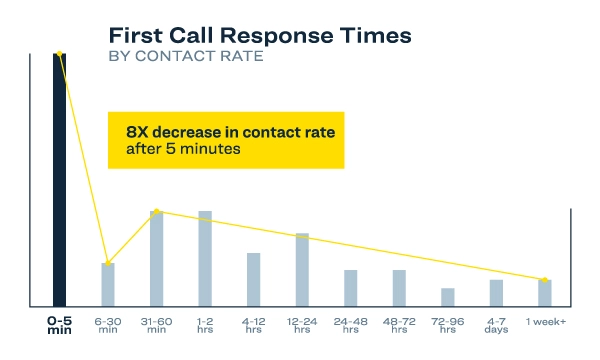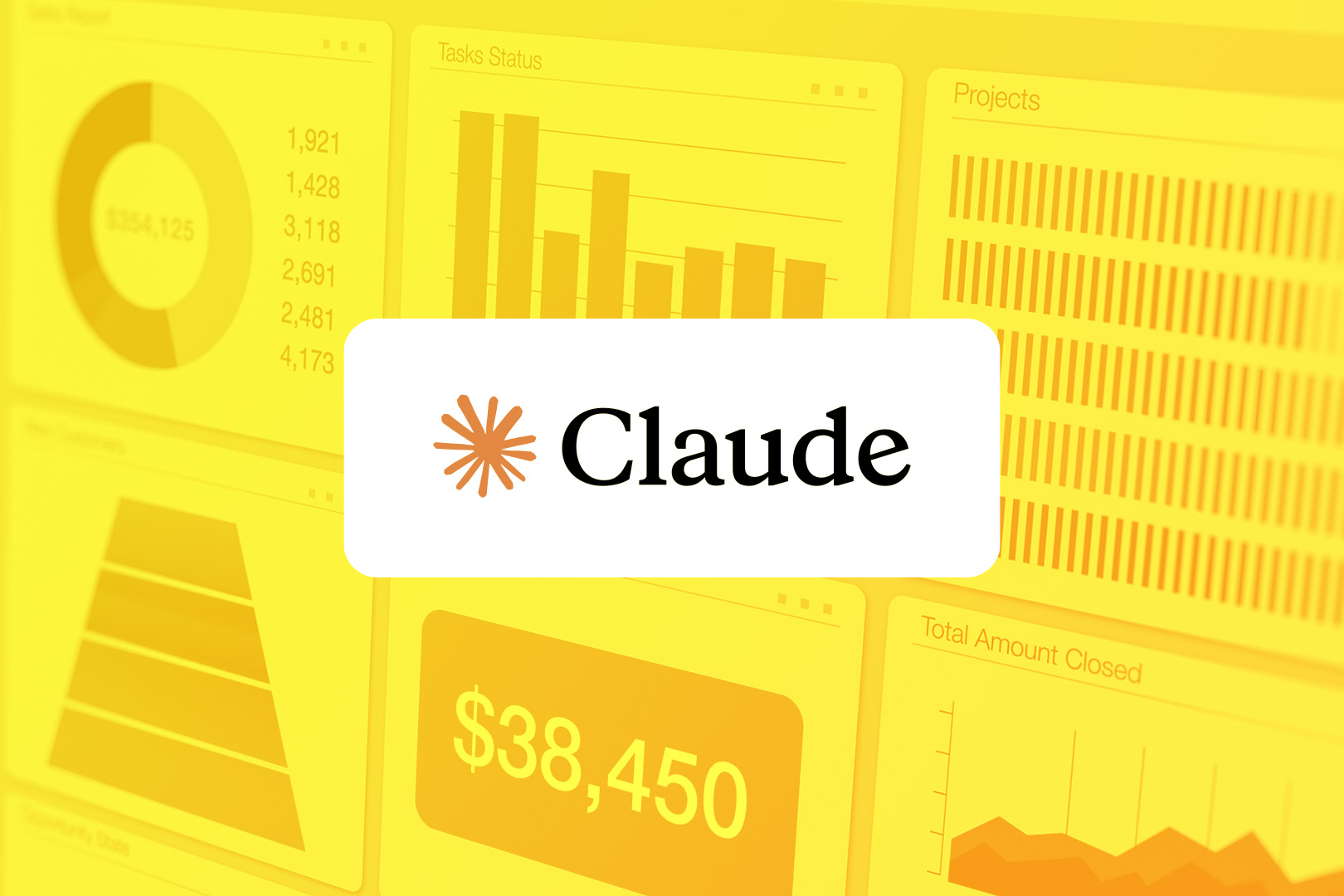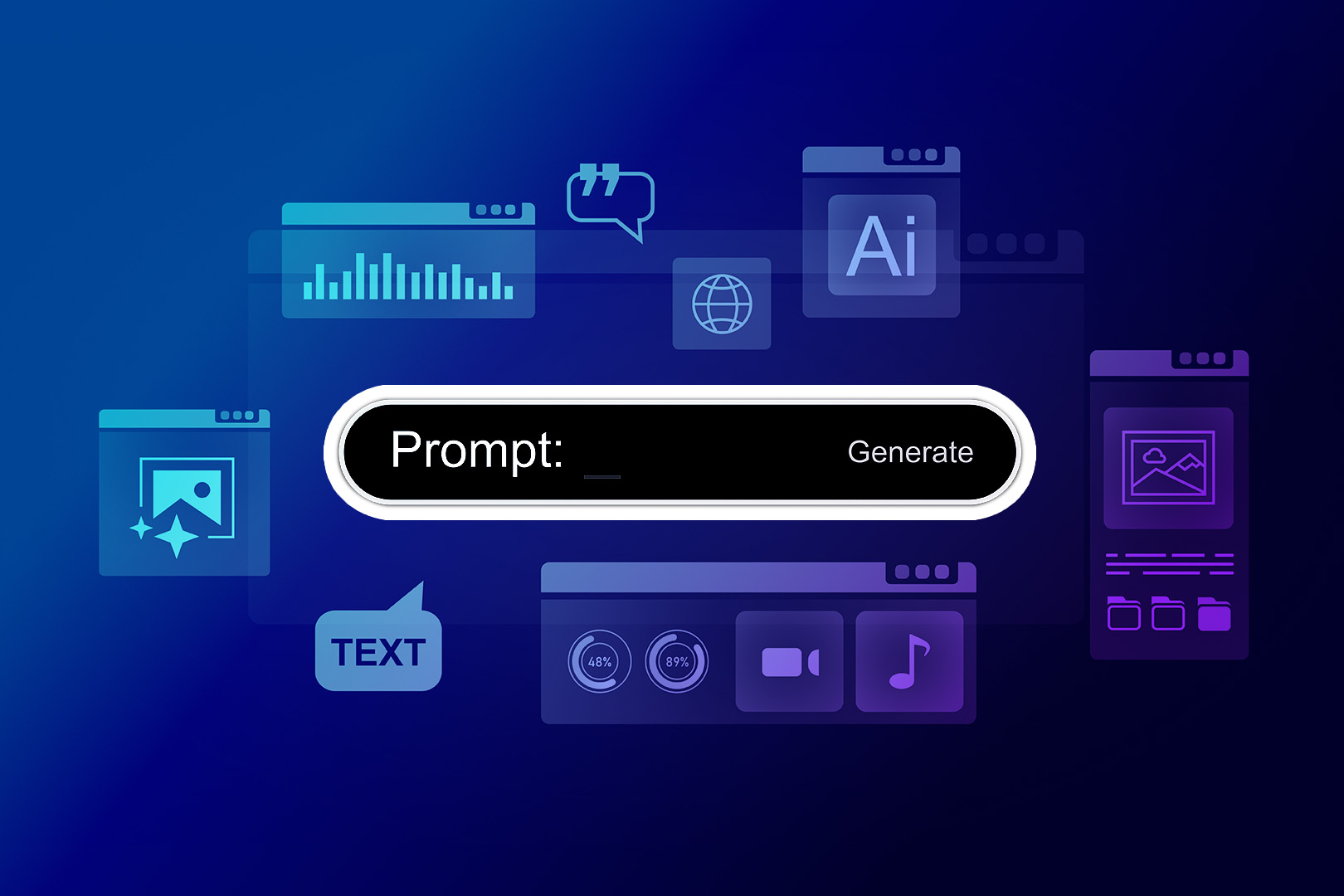
Calcular o custo das chamadas não atendidas e dominar a "regra dos cinco minutos"
As equipas de vendas perdem frequentemente tempo. A equipa passa inúmeras horas a gerar contactos, mas se não estiver presente para atender o telefone quando um contacto telefónico é contactado, todo o seu trabalho árduo vai por água abaixo.
Chamemos-lhe a regra dos cinco minutos: se o seu tempo de resposta aos contactos for demasiado lento, as suas hipóteses de qualificar um contacto podem cair 80% em apenas cinco minutos.
Mas a velocidade não é o único problema para lidar com novos contactos. A velocidade com consistência é que é. Se não responder aos seus potenciais clientes num instante, está a dar-lhes a oportunidade de passarem para os seus concorrentes. Aqui está tudo o que precisa de saber sobre o custo de uma chamada não atendida e como maximizar as vendas de chamadas não atendidas para recuperar as oportunidades perdidas.
A razão pela qual cinco minutos é a "regra"
Ponha-se no lugar do potencial cliente por um momento.
Estão a fazer pesquisas online. Estão interessados em serviços como o seu. Estão a recolher informações, a obter dados sobre preços e talvez tenham alguns separadores abertos. Quando tiverem restringido a sua pesquisa, poderão telefonar a um dos finalistas para ver se conseguem obter resposta a algumas perguntas.
Se fosse você a escolher entre a empresa A e a empresa B, e apenas a empresa B lhe telefonasse no prazo de cinco minutos, quem é mais provável que escolhesse?
(Um aparte: também vai querer compreender como as tendências recentes, como a triagem de chamadas da Apple, podem afetar o facto de os seus clientes chegarem a contactá-lo).
Não podemos evitar: se a empresa B responde rapidamente, pensamos que é ela que nos leva a sério como potenciais clientes.
A regra dos cinco minutos: seja qual for a razão, esperar mais de cinco minutos para entrar em contacto resulta numa queda drástica do envolvimento.

Fonte: InsideSales
Se estiver disponível para atender o telefone no momento em que um potencial cliente telefona, as taxas de conversão são cerca de 8 vezes mais elevadas do que se esperar entre cinco minutos e 24 horas.
Porquê? Pode ser a vantagem de ser o primeiro a chegar. É por isso que a otimização do tempo de resposta dos clientes potenciais não é apenas agradável; é fundamental para definir o tom. É você quem causa a primeira (e, esperamos, boa) impressão.
O que é realmente impressionante nestes números? A queda após cinco minutos de tempo de resposta do lead.
As taxas de contacto caem a pique pouco depois de cinco minutos - de tal forma que mais vale esperar dias se não tiver conseguido falar com o potencial cliente ao telefone de imediato.
Por isso, se quiser que os números se acumulem a seu favor e não contra si, tem de pensar nesses cinco minutos.
Isto é especialmente verdade se for uma empresa em fase de arranque. Ou se for uma história de "sucata". Cinco minutos podem ser a única oportunidade que a sua empresa tem para se diferenciar. Talvez as grandes empresas possam oferecer preços mais favoráveis ou um conjunto de outras caraterísticas que você não tem.
Mas se for o primeiro a falar ao telefone, isso mostra bem o quanto aprecia cada oportunidade de convencer um potencial cliente de que o seu serviço é adequado para ele.
O custo real de uma chamada não atendida
Porquê cinco minutos? Em primeiro lugar, estas regras continuariam a aplicar-se se os números mostrassem que, após cinco minutos, os contactos arrefecem apenas ligeiramente. Por que não falar com um potencial cliente ao telefone se isso lhe dá uma vantagem de um por cento?
Mas os números são mais drásticos do que isso. As hipóteses não descem 50 por cento após cinco minutos. Elas são completamente destruídas.
Vamos colocar isso em termos de dólares reais. Qual é o custo da perda de oportunidade de não converter mais clientes utilizando a regra dos cinco minutos?
Mantendo o número "80 por cento" que citámos anteriormente, imaginemos que a sua oportunidade de converter um cliente cai 80 por cento após cinco minutos.
Imagine que vende um serviço caro e que o valor médio dos contactos é de $1.000. A sua taxa de fecho quando responde em cinco minutos é de 20%. Excelente trabalho. Mas se a sua oportunidade cair 80% porque ignorou a regra dos 5 minutos, essa taxa de fecho passa a ser de 4%.
Se receber 30 chamadas por mês, uma taxa de conversão de 20% rende 6.000 dólares em oportunidades. No entanto, com uma taxa de conversão de quatro por cento, o resultado é de 1.200 dólares por mês.
Se tiver feito o trabalho árduo de dar aos clientes uma razão para lerem o seu sítio Web e entrarem em contacto, algo tão simples como pegar no telefone não deve custar a grande maioria das suas conversões.
Sente-se. Faça os cálculos. O simples custo de uma chamada perdida é suficiente para mudar a forma como pensa sobre a regra dos cinco minutos.
Um agente de IA é a melhor forma de ser mais rápido?
A solução é óbvia: velocidade, velocidade e mais velocidade.
Mas não se trata apenas da velocidade da chamada. Um minuto para a chamada é ótimo, mas se só o fizermos em 10% das vezes, continuamos a perder oportunidades quando ultrapassamos os cinco minutos nas outras chamadas.
O objetivo não é apenas a velocidade. É a velocidade fornecida de forma consistente.
E para que isso aconteça podem ser necessárias algumas mudanças fundamentais na forma como responde aos potenciais clientes.
Se a sua equipa falhar apenas 50 chamadas por mês e cada contacto valer 500 dólares, são 25.000 dólares de potenciais receitas perdidas. Então o que é que faz? Olha para esses $25.000 em receitas como algo em que vale a pena investir.
Se compararmos esses 25 000 dólares com o custo da criação de um agente de IA ou de uma automatização dentro do Closecusto que é apenas uma fração do que pode obter em troca - o ROI torna-se impossível de ignorar.
Assim, se conseguir obter ajuda de funcionalidades com IA - mesmo que seja apenas o agente de IA a fazer a chamada por si - pode aumentar drasticamente o seu potencial de vendas. Isto é verdade mesmo que a IA ou o software de apoio não o torne mais rápido, mas torne possível ser mais rápido de forma mais consistente.
Como é que se calcula isso? Aqui está uma fórmula básica:
Custo das chamadas não atendidas = Número de contactos × % de chamadas não atendidas ou lentas × (taxa de Close rápido - taxa de Close lento) × dimensão média do negócio
Aqui, a sua taxa de fecho rápido é a taxa de fecho se responder em cinco minutos. A taxa de fecho lento pressupõe que 80% desistem após cinco minutos.
Eis como funciona a calculadora. Imaginemos que as referências do sector são verdadeiras: 78% dos clientes escolhem a empresa que os contacta primeiro.
Imaginemos também que conseguir que um potencial cliente receba uma chamada é de facto uma vantagem significativa. Olhando para alguns sectores, podemos ver que as estatísticas do tempo de resposta dos clientes potenciais estão por todo o lado. E, normalmente, são muito superiores a cinco minutos:
- Cuidados de saúde: 2 horas e 5 minutos
- Telecomunicações: 16 minutos
- Pequenas empresas: 48 minutos
- Médias empresas: 1 hora e 38 minutos
- Grandes empresas: 1 hora e 28 minutos
Se é uma pequena empresa que recebe 100 contactos por mês com um tamanho médio de negócio de 1000 dólares, mas o seu tempo de resposta é proporcional à média das pequenas empresas (48 minutos), é por isso que pode esperar uma perda de receitas de 4800 dólares por mês.
Neste contexto, será que uma solução de 100 dólares por mês para a sua empresa é assim tão cara?
Exemplos do poder de um tempo de resposta mais rápido dos clientes potenciais
Os números acima são claros. Melhorar o tempo de resposta dos contactos em alguns minutos pode significar a diferença entre uma venda perdida e uma oportunidade qualificada.
Mas estas são apenas fórmulas no papel. Como é que um tempo de resposta consistentemente mais rápido se parece na prática?
Vejamos o exemplo da Commonwealth Joe, uma empresa de torrefação de café que utiliza dados em tempo real para melhorar a experiência de consumo de café e cerveja para todos.
Para trazer a sua equipe de vendas para a era digital, a Commonwealth Joe começou a pesquisar CRMs que se pudessem integrar nos seus fluxos de trabalho existentes, ajudando-os simultaneamente a escalar de forma eficaz.
Mudaram para Close. Atualmente, enviam mais de 3000 mensagens de correio eletrónico por mês utilizando Close e até já têm como cliente a HomeAdvisor (uma empresa com mais de 500 empregados que apreciam o seu café diariamente).
Como é que funcionou?
Os clientes podem utilizar as funcionalidades de fluxo de trabalho no Close.

Apesar de terem investido milhares de euros em recursos de engenharia e consultoria, não conseguiram que o Salesforce se adaptasse ao fluxo de trabalho rápido das PME.
"Close reduziu o meu tempo de gestão para metade", afirmou Jonathan Hinshaw, Diretor de Vendas da UGURUS.
Uma das formas de a equipa de vendas conseguir chamadas de retorno mais rápidas é eliminar a "confusão de tempo".
Outro exemplo foi o HR Covered, que tinha analisado "dezenas" de soluções em busca de uma forma mais rápida de estabelecer ligações. Mas tudo era demasiado complicado. "Precisávamos principalmente de telefonia, mensagens de texto, uma ligação ao Gmail e integrações fáceis com as nossas outras aplicações", afirmou Randy Nordgren, líder de marketing e vendas.
Ajudou-os a acelerar os seus tempos de resposta? "Close é a nossa ferramenta número 1 para o nosso crescimento este ano. A ativação de vendas, as sequências e o Power Dialer - permitem-nos crescer e aumentar a escala porque podemos passar pelos contactos mais rapidamente."
Porque é que a consistência vence - não apenas a velocidade
Até agora, demos provavelmente a impressão de que a velocidade, e apenas a velocidade, é o que conta.
É parcialmente verdade. Há aquela queda acentuada após cinco minutos que mencionámos. E se não cumprirmos essa norma, estamos perante custos de oportunidade muito reais.
Mas isso não é tudo.
Mesmo que consiga cumprir a regra dos cinco minutos uma vez, pode perder o negócio se desaparecer após a primeira chamada. Embora as taxas de conversão em respostas mais rápidas sejam mais altas, elas ainda não são 100%.
É necessário dispor de sistemas que facilitem a velocidade e a tenacidade das vendas. E precisa de fazer as duas coisas de forma consistente.
Mas isso já tu sabes. A questão é: como? Que tipos de fluxos de trabalho pode implementar para qualificar os contactos e tornar a consistência inevitável? Algumas recomendações da experiência dos nossos clientes:
- Centralize a sua comunicação. É mais fácil fazer o acompanhamento quando os seus fluxos de trabalho estão centralizados - desta forma, não está a saltar entre chamadas, mensagens de texto, e-mails e muito mais. Foi o que a HR Covered fez, inscrevendo-se num Plano Empresarial com um desconto anual. E descobriram que era mais fácil fazer o acompanhamento das chamadas telefónicas porque Close CRM tornou os seus fluxos de trabalho lineares. "Desde o 'lead' até à 'oportunidade reservada' e à 'venda', é tudo uma linha reta", disse Nordgren. "Um caminho crítico."
- Reduzir a "confusão de complementos". Um tema frequente na melhoria da velocidade: a simplicidade funciona melhor. Foi o caso da HR Covered, que eliminou o emaranhado de add-ons e consultores externos quando mudou para um único CRM.
- Marcar o representante de vendas certo com atribuições de leads. A melhor forma de garantir a consistência da velocidade é criar um fluxo de trabalho no seu CRM que "marque" um representante de vendas disponível sem sobrecarregá-lo demasiado. As funcionalidades de atribuição automática do Close podem utilizar filtros específicos definidos por si para garantir que o representante certo está pronto para contactar o contacto certo.
- Instalação de marcadores avançados e marcadores preditivos. Se só tem cinco minutos para fazer uma chamada, todos os segundos contam. Os marcadores avançados e os marcadores preditivos são como as funcionalidades de "preenchimento automático" que pode ver num motor de busca: quase nem tem de pensar na pesquisa inteira antes de o software destacar para quem está a ligar.
Utilizar uma ferramenta que "nunca dorme"
Tendo em conta estas caraterísticas, como pode ser um fluxo de trabalho se estiver a tentar dominar a arte da regra dos cinco minutos?
Em primeiro lugar, eis a visão geral. Imagine o seguinte: um cliente potencial preenche um formulário no seu site. É oficialmente um contacto. Em segundos, o seu CRM encaminha-o para o representante certo. Também envia um e-mail automático com o número de telefone ou o endereço de correio eletrónico do cliente potencial, dizendo "obrigado por ter contactado".
No seu CRM, o fluxo de trabalho coloca em fila de espera uma tarefa de chamada para que o representante designado saiba algumas coisas: primeiro, espera-se que ele faça o acompanhamento. Segundo, a IA pode resumir as informações básicas sobre o lead para que ele esteja pronto para fazer o acompanhamento em minutos.
Close pode conseguir um tempo de resposta mais rápido para os contactos de entrada através de três caraterísticas principais:
- Encaminhamento de contactos / automatização de tarefas: Quando um novo contacto surge no sistema, Close pode atribuí-lo instantaneamente ao representante certo, sem necessidade de transferência manual. O sistema trata disso automaticamente, criando tarefas no painel de controlo do representante certo. Desta forma, nada fica por fazer, mesmo que os contactos cheguem à meia-noite.
- Chamadas e SMS incorporados: Uma das melhores formas de acelerar a sua resposta é evitar fazer malabarismos com ferramentas e copiar/colar números. Trabalhe no seu CRM para analisar as informações do cliente potencial e, em seguida, ligue, envie uma mensagem de texto ou registe a conversa diretamente no software. Isto reduz o número total de pontos de contacto para acelerar o processo.
- Fluxos de trabalho automáticos: Crie fluxos de trabalho para programar mensagens de correio eletrónico ou de texto de acompanhamento automáticas ou defina lembretes para o representante de vendas adequado. Pode até ser capaz de acordar com contactos qualificados e ver que, durante a noite, o sistema tratou de um contacto rápido e automatizado para manter o seu serviço em mente antes de o contactar manualmente.
Faça da regra dos 5 minutos a sua vantagem
Pense nos contactos como um recurso "perecível". Não quer colocar um lote de morangos frescos no frigorífico para depois voltar a ele e ver que estão cheios de bolor.
O tempo de resposta dos seus contactos de entrada funciona da mesma forma. Se não responder quando os contactos estão frescos, tem apenas cinco minutos antes de as suas probabilidades de efetuar a venda começarem a cair de um penhasco.
Mas há também uma vantagem intrínseca aqui. A diferença entre o momento em que as outras empresas respondem e o momento em que responde pode ser um fator de diferenciação. Quanto maior for a probabilidade de fechar essas vendas com um toque pessoal, maior será a poupança no custo das chamadas não atendidas.
Quando aprender a maximizar as vendas a partir de chamadas não atendidas, deixará de deixar receitas em cima da mesa e converterá mais leads pelos quais já pagou.
Faça da regra dos cinco minutos a sua nova vantagem competitiva com o Close. Muitos dos nossos clientes começaram com uma simples avaliação gratuita antes de descobrirem que não queriam voltar a utilizar ferramentas mais lentas.











